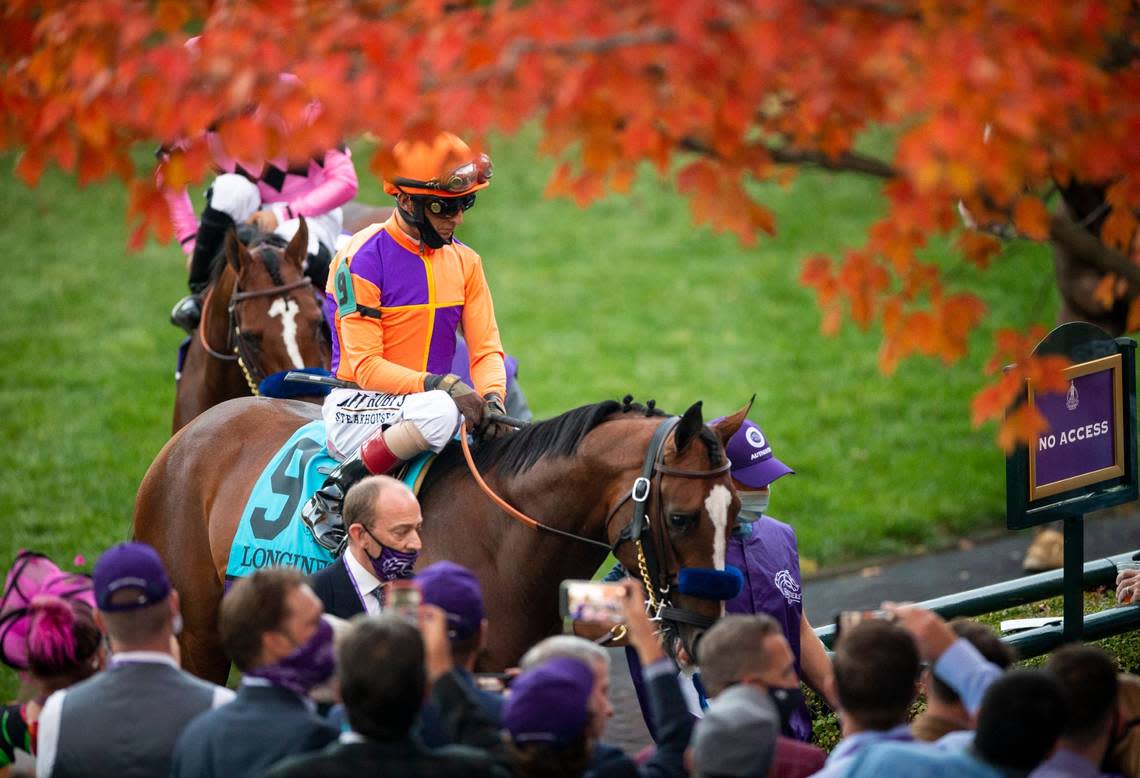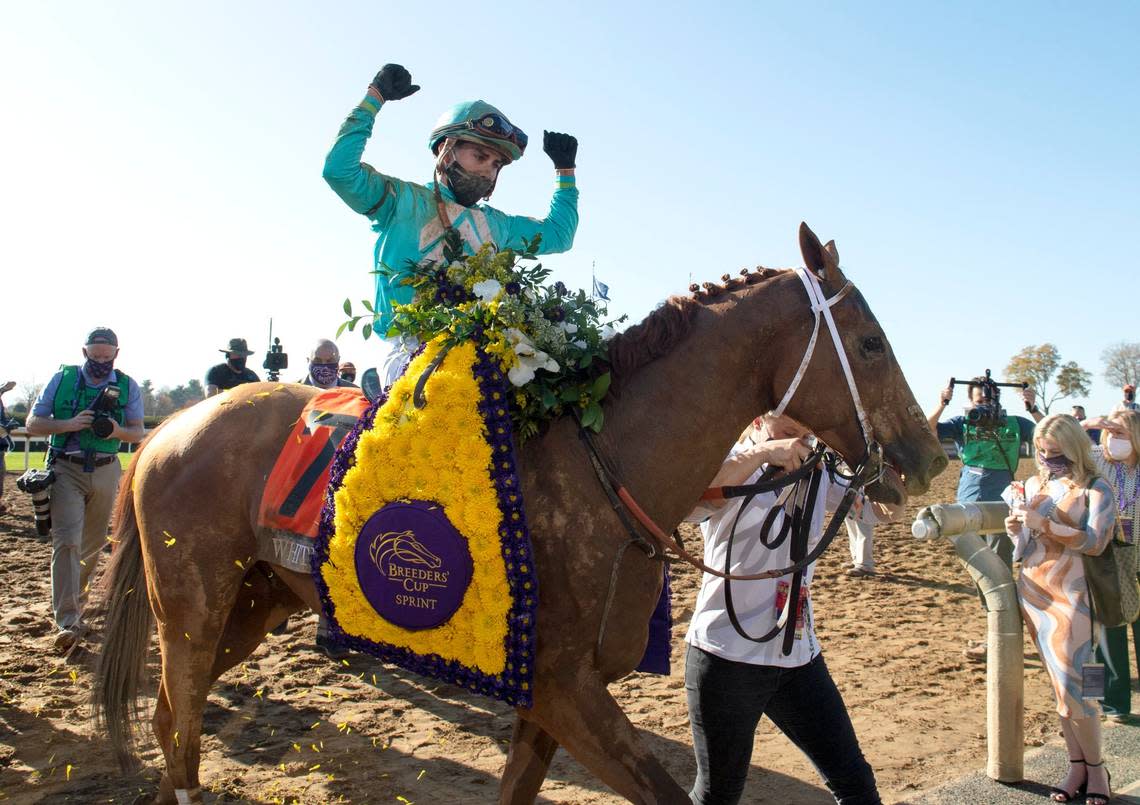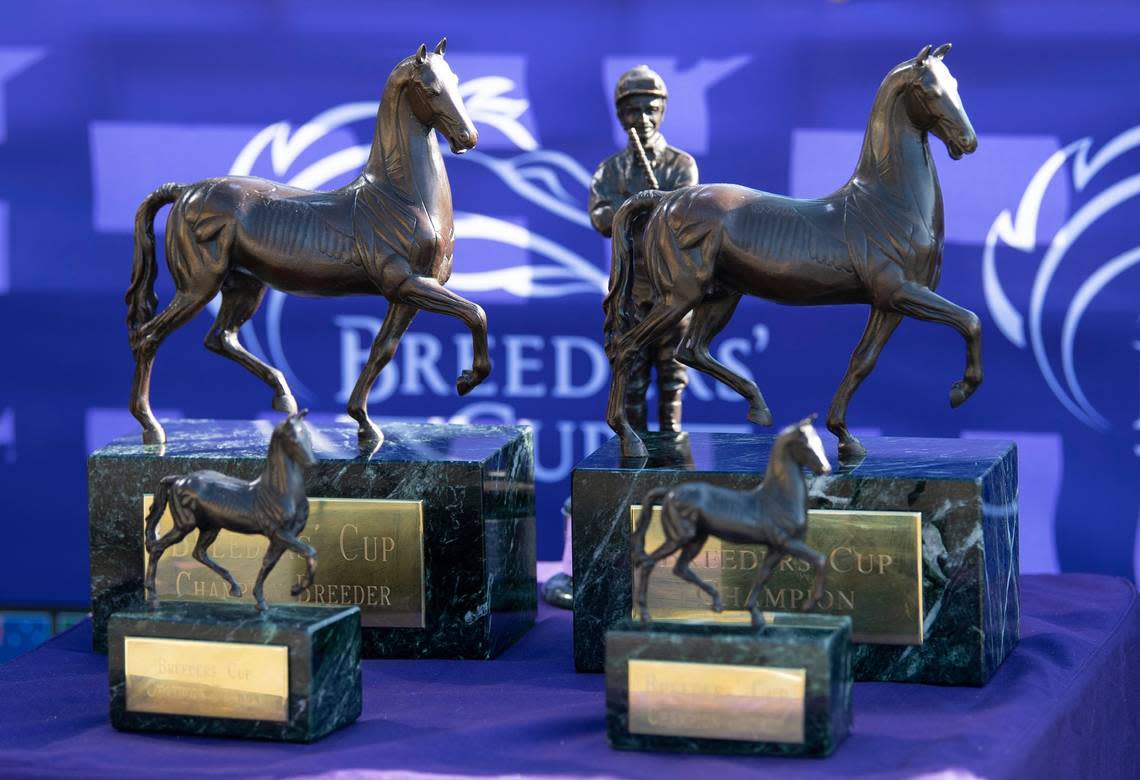Q and A: Everything you need to know about this week’s 39th Breeders’ Cup at Keeneland
The Breeders’ Cup is coming to Lexington for only the third time ever later this week, bringing to town many of the biggest names in horse racing.
If you don’t recall much about 2015 or 2020, the first two times Thoroughbred racing’s World Championships were hosted by Keeneland, here’s a primer on why it’s such an important event:
What is the Breeders’ Cup?
The Breeders’ Cup began in 1984 as a season-ending championship of sorts for Thoroughbred racing. The event features the best horses from America — and many of the best from around the world — competing for some of the richest purses of the year. It has evolved into the year’s biggest day — now two days — of racing.
Why does it last two days?
The first Breeders’ Cup consisted of seven races run on a single day, and that was the format until the Filly and Mare Turf race was added in 1999. Three more new races were added in 2007, and the event moved to two days for the first time to accommodate the growing card. There have been as many as 15 races on a single Breeders’ Cup card (in 2011 and 2012), but the current format is 14 races.
Why are there 14 races?
The assortment of races allows for horses from all divisions to find a suitable spot to compete. For example: Five races are restricted to 2-year-olds only, five races feature only female Thoroughbreds and all races feature differing distances and track surfaces. The varied card allows owners and trainers to find the right fit for each competitor. The races are organized so that all five events on opening day — Future Stars Friday — are for 2-year-olds. All nine Breeders’ Cup races Saturday are for older horses.
What is the biggest race?
The Breeders’ Cup Classic — first won by 31-1 shot Wild Again in 1984 — has become akin to the Super Bowl of Thoroughbred racing. The 1 1/4-mile race originally had a purse of $3 million, which has now increased to $6 million. Of that total, $3,120,000 goes to the champion. Past winners of the Classic include such famous names as Sunday Silence, Unbridled, A.P. Indy, Cigar, Skip Away, Tiznow, Zenyatta, American Pharoah and Arrogate. The expected favorite for this year’s race is undefeated 4-year-old Flightline, who won his most recent race by 19 1/4 lengths. Top challengers include Todd Pletcher trainee Life Is Good, a 4-year-old who has won nine of his 11 career races including five Grade 1 events. Trainer Bob Baffert, who has won the previous two Classics at Keeneland with American Pharoah (2015) and Authentic (2020) has entered talented but lightly raced Taiba.

How many horses are involved and where are they from?
Each race allows a maximum of 14 competitors, but not all of the races will reach that number. There were a total of 148 starters for the 14 races in 2021 at Del Mar. This year, 208 Thoroughbreds were pre-entered, including 45 from foreign countries.
Are all the races on TV?
Yes. All five of the Friday Breeders’ Cup races will be televised nationally on the USA Network, with a four-hour live broadcast beginning at 2 p.m. Every Friday race will also be shown on Fan Duel TV (formerly TVG). The USA Network resumes coverage Saturday at 1 p.m. before switching over to NBC and Peacock for the remainder of the races from 3:30 to 6 p.m. Post time for the Breeders’ Cup Classic is 5:40 p.m. Saturday’s races will also be available on Fan Duel TV.
When are the post-position draws?
Fans are invited to Rupp Arena in Lexington on Monday, Oct. 31, to watch the post-position draws for all 14 Breeders’ Cup races. The program gets underway at 2:30 p.m. and will also be televised live on Fan Duel TV. Kentucky men’s basketball coach John Calipari will assist with the draw for the Breeders’ Cup Classic.
What do the winners get?
The purses vary in size — from $1-6 million — depending on the race. The connections of each winner also receive a replica of the Breeders’ Cup Trophy, an authentic bronze reproduction of the original Torrie horse that was created by Flemish sculptor Giambologna in the late 1580s, as well as a flower garland comprised of Beauty Asters, Golden Asters, Cremons and Cattleya Orchids.


This is the third of the 39 Breeders’ Cups to be run at Keeneland. Where else has it been held?
The Breeders’ Cup has traditionally been raced at tracks with larger capacities, starting at Hollywood Park in California in 1984. Santa Anita has hosted 10 times and Churchill Downs nine. Other tracks that have been home to the Breeders’ Cup include Arlington (Ill.), Aqueduct (N.Y.), Belmont (N.Y.), Del Mar (Calif.), Gulfstream (Fla.), Lone Star (Texas), Monmouth (N.J.) and Woodbine (Ont.). Next year’s 40th running is scheduled for Nov. 3-4, 2023, at Santa Anita.
